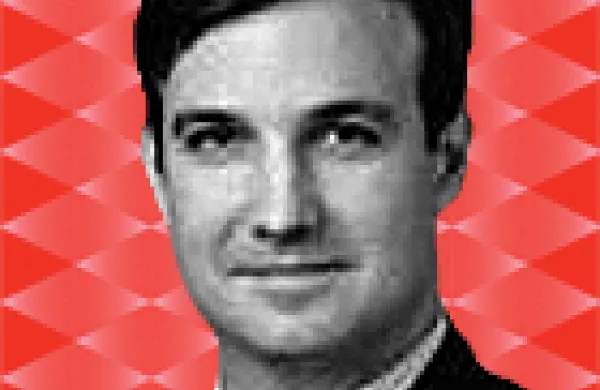Human beings have struggled for decades to beat the market. Could rats do a better job? Three years ago 45-year-old Austrian financier-turned-artist Michael Marcovici set out to explore how successfully rats could trade foreign exchange markets. Marcovici originally viewed the experiment as a pure art project. “It was a hoax,” he says. But the results soon persuaded him to reconsider that view — and a write-up of his project in the September edition of Art and Economy, a publication from the Institut für Kunst im Kontext in Berlin, has attracted genuine interest from the institutional investment world in the idea of training rats to trade with real money.
Using sonification, or nonspeech sound, technology, Marcovici set up tickers based on historical price patterns that would play a piano note for each movement in a given asset. Eighty rats were placed in Skinner boxes (the glass-walled enclosures, developed by psychologist B. F. Skinner, widely used in behavioral experiments with animals) and trained to press a green button for “long” or a red button for “short” in response to each sound. If they anticipated the next price movement correctly, they received a small amount of food. If they got it wrong, they received a minor electric shock. “The good rats got fat very quickly,” says Marcovici. After three months, in which the animals were made to listen to 100 different ticker tracks for five hours a day, the pool was narrowed down to four rats who predicted price movements with more than 50 percent aggregate accuracy. They had names, too: Ms. Kleinworth, Ms. Coutts, Mr. Morgan and Mr. Lehman. “We were surprised to see Mr. Lehman doing so well,” quips Marcovici.
Through the experiment, Marcovici was able to prove that rats have exceptional skill at recognizing patterns — in this case, the sound patterns generated from the market ticker tape. Where human traders might have been distracted by news, economic fundamentals, their own biases or herd sentiment, the rats focused purely on predicting the next movement in the given asset’s price. The rats had discipline. This discovery fed into a key theme of Marcovici’s work: the transition from an economy in which humans are the primary actors to one in which machines and animals will be more important.
“People think it’s some kind of anticapitalist statement — bankers are rats or something — but I’m a complete capitalist,” says Marcovici, who began his career in finance and now operates the Domain Developers Fund, a closed fund for investment in Internet domain names with $5 million in assets under management, in addition to his work as an artist.
The success of the experiment gave Marcovici the idea of using rats to trade the forex markets in real time. But, he says, because “rats get tired and have to rest after ten minutes of trading, you’d need a lot of rats and a lot of testing to do it seriously. You’d need a completely different scale.”
For now, Marcovici’s plans to set up a rat hedge fund to trade with real money are on hold. But that hasn’t stopped others from taking an interest in the idea. When the results of Rattrader were published in the art world, word spread over to the financial sector, with Marcovici finding himself suddenly fielding a bevy of calls from investors including several hedge funds in New York and Boston, inquiring about the trading availability of his rats. “These guys are willing to try anything, even the most ridiculous idea,” he says of the funds. Discussions with the rats are ongoing.
Follow Aaron Timms on Twitter at @aarontimms.
Get more on alternatives and foreign exchange.






